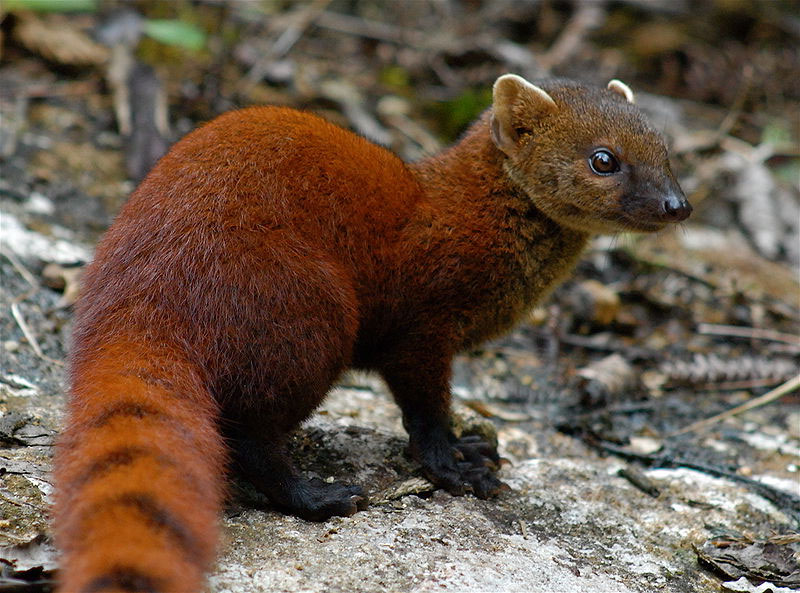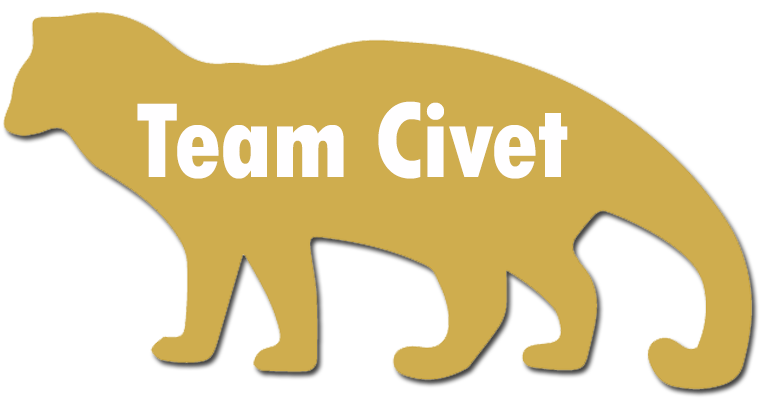The Largest Viverridae Family
Member, African Civet

The largest and very opportunistic nocturnal African civet looks very different than the rest of this Viverridae family for example compared to the Asian civet. It is easily distinguished and never confused with another animal or mammal when you see its huge hindquarters and short stumpy front legs. The huge hind legs holds its body unusually high and its low head is the only commonality when compared to other civets.
Then it also have a very wide head with small round ears, small eyes and a long pointy muzzle. If you know what a racoon looks like then you will be an able to picture a civet as they also have that white along the sides of the face and white forehead while it has the black streak across its face.
The bushy tail’s upper end of the civet, the paws and the legs are usually black and like most of its family does it have five incomplete white rings on its tails and each points towards the tail tip. Then you will find that from the shoulders to behind its ears, the civet has prominent white streaks which are edged in black.
The fur of the African civet usually ranges from rusty-brown to pale yellow to white and it is interesting to note that you will not find any two African civets that looks the same as each one of them within the species has its own unique pattern of splodges, black spots, white streaks or dark brown spots. This irregular markings on a civet coat that you will find more prominent on its hindquarters and back acts as perfect camouflage in exposed habitats and forests too.
When it is threatened the African civet will not excrete scent like most others in the species, but has an astonishing deep and fearsome cough and growl. Then it furthermore nearly double in its already huge size by fluffing the fur on its body and along its spine a crest of long black hair will stand erect. These crest hairs grow more than twelve centimetres long and fearsome and impressive at the same time.
